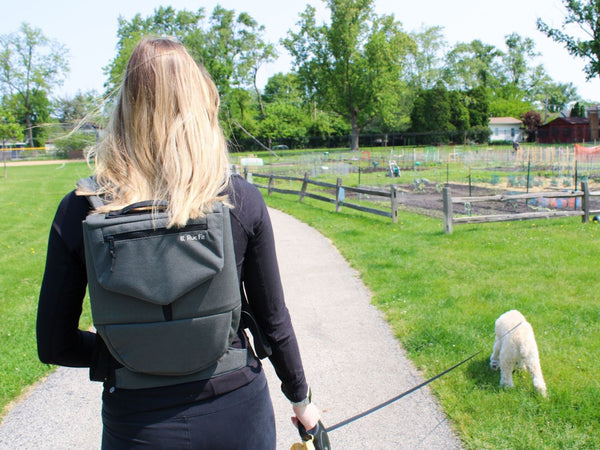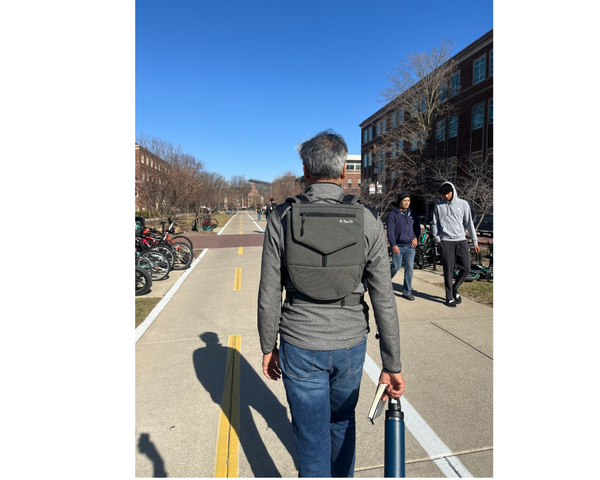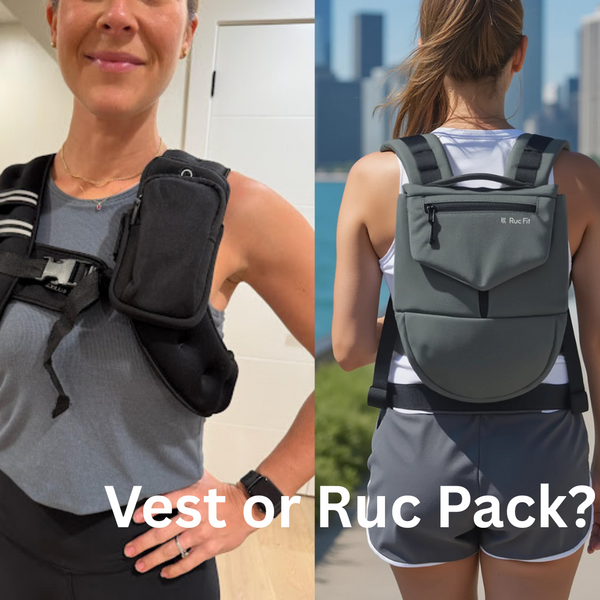Posts
8 Things I Wish I Knew Before I Started Rucking (Former Competitive Runner)
Abby, a former competitive runner, thought rucking would be easy—spoiler: it wasn’t.
She learned to start slow, expect soreness, and ditch the runner’s obsession with speed.
Proper gear, a hip belt, and core engagement make all the difference.
Build weight gradually—don’t jump to 1/3 of your body weight.
Train on hills before tackling mountains.
Rucking is humbling, rewarding, and builds strength one step at a time.
Reclaim Your Lunch Break: Rucking Workouts for the Return To Office Crowd
Missing the time and flexibility you had while working from home?
Commutes are back. Calendars are full. And wellness routines? Often the first thing to go.
But even with a packed schedule, your lunch break is a chance to take back control.
With as little as 20 minutes, you can get in a full-body, low-impact workout—without a gym, a change of clothes, or even breaking a sweat.
It’s called rucking—walking with weight—and it’s the perfect way to reset midday.
Weighted Vest vs. Ruck Pack: Which is Better for Rucking?
Rucking is a simple yet powerful way to build strength and endurance, but how you carry the weight matters. While weighted vests offer a snug fit for short workouts, ruck packs provide better breathability, weight distribution, and long-term comfort. With greater load capacity, posture support, and adaptability to real-life movement, rucking backpacks are a more versatile choice—especially for longer sessions or progressive training. For those looking to train smarter and more sustainably, a purpose-built ruck pack like the Ruc Pack offers the ideal balance of performance, comfort, and everyday functionality.
Heart Rate, Burn, and Grit: What a Ruck March Study Reveals About Walking with Weight
A study from the University of North Georgia found that adding weight to a 6-mile walk significantly increased heart rate, calorie burn, and perceived effort. ROTC cadets carrying 43-lb packs burned 45% more calories and reached heart rates similar to elite endurance athletes. Though cadence dropped, form improved due to greater core engagement. The study confirms what ruckers feel: walking with weight amplifies the workout. It's a scalable, joint-friendly way to build strength, endurance, and efficiency—no gym required.
What a Study out of Sweden Says About Weighted Vests and Fat Loss
A Swedish clinical trial found that wearing a weighted vest for just 8 hours a day over three weeks led to significant fat loss—without changes in diet or exercise. Participants who wore vests equal to 11% of their body weight lost nearly 3 pounds and 5% of their fat mass. The study supports the idea of a built-in weight-regulation system called the gravitostat, which may trigger fat loss in response to added load. This low-effort approach shows promise as a non-drug, sustainable strategy for weight management.
7 Surprising Things That Happen When You Start Rucking
Ever wish your workouts felt less like a chore and more like a walk with purpose?
That’s rucking: walking with weight on your back. Simple, low-impact, surprisingly effective—and way more rewarding than you’d expect.
From better posture and mental clarity to the quiet confidence that comes from doing hard things regularly, rucking does more than get your steps in. You’ll feel stronger, think clearer, and maybe even find that your favorite old jeans fit a little better.
We broke down 7 surprising things that start happening when you start rucking—and why it might just become your favorite new habit.





